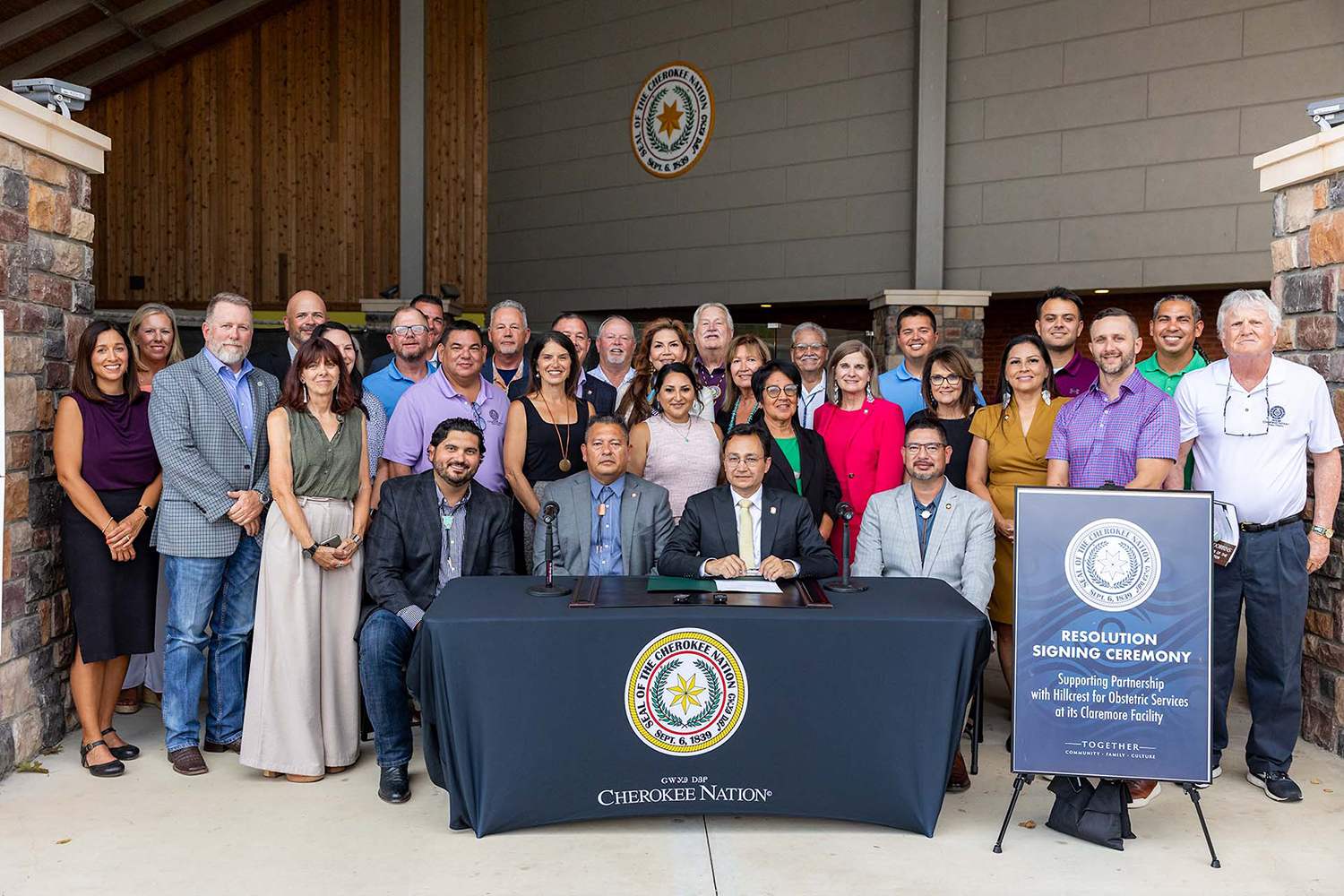TAHLEQUAH, Okla. — The Council of the Cherokee Nation signed a resolution Monday to support an MOU with Hillcrest Hospital Claremore to solidify labor and delivery and OB services for expectant mothers at the Claremore Indian Hospital.
Cherokee Nation Principal Chief Chuck Hoskin Jr. and Deputy Chief Bryan Warner proposed the resolution of support during the August 11 Council Health Committee meeting, and the proposal was later passed and signed in a ceremony Monday evening.
“Cherokee Nation operates the best tribal health care system in the country, and we are committed to ensuring that tribal citizens in the Claremore community experience that same level of care come October 1,” Chief Hoskin said of the resolution supporting the MOU. “When it’s time for new mothers to deliver, this proposed strengthened partnership with expert coordination in a ready facility will be best equipped to welcome our newest tribal citizens into the world.”
The proposal with Hillcrest Hospital Claremore will provide obstetric services to patients referred by Cherokee Nation, ensuring continuity of care and access to high-quality labor and delivery options and will be presented later this month.
Deputy Chief Bryan Warner said the collaboration for Cherokee families is vital.
“We believe in taking care of families, and that starts at birth. This proposed partnership reflects our commitment to providing the best care for our people, right here in our community,” he said.
Cherokee Nation Councilor Dora Patzkowski said the resolution supporting the proposed MOU will help ease any concerns by expectant mothers who utilize the Claremore Indian Hospital for OB care when the tribe assumes operations.
“The Council fully supports this resolution and ensuring that by October 1 there is a plan in place for the seamless transition of care for our patients who need OB care at Claremore,” Councilor Patzkowski said. “This proposed MOU agreement provides a facility and care that had worked with IHS previously to deliver higher risk pregnancies. This agreement extends services for all tribal mothers and babies.”
The resolution of support for the proposed MOU will strengthen healthcare access for the entire region.
Cherokee Nation continues to work on plans for inpatient services to complement outpatient and emergency services at the Claremore Indian Hospital beginning in October. This includes making employment opportunities exclusively available to the existing Claremore IHS staff.
In June, Chief Hoskin officially signed into law the Cherokee Nation Claremore Outpatient and Emergency Health Center Act of 2025, which authorizes $255.5 million to construct a new Claremore health facility over the next couple of years. Chief Hoskin signed the legislation with unanimous support from the Council of the Cherokee Nation.
Chief Hoskin and Deputy Chief Warner proposed the massive investment into a new health care facility as part of the tribe’s planned assumption of operations of Claremore Indian Hospital.
The assumption calls for a state-of-the-art outpatient center, emergency room and a new wellness center to be built in Claremore. The tribe will also invest approximately $11 million into the existing Claremore facility after assuming operations to bring it up to minimum health care standards as the new replacement is being constructed.
Chief Hoskin expressed concerns about misinformation circulating on social media, but expressed optimism that Cherokee Nation citizens and the general public would view the Cherokee Council’s action on Monday as further evidence of Cherokee Nation’s serious and thoughtful approach to improving health services in Claremore.
“There are a few folks who seem to be perpetually running for public office who, quite frankly, are busy exploiting the natural concerns that any patient might have when there is change to a health system by spreading mistruths,” said Chief Hoskin. “But, today’s action by the Council shows once again that Cherokee Nation elected leaders and talented health staff are acting responsibly and are focused on providing better healthcare for patients and better support for the talented workforce who care for those patients.”

